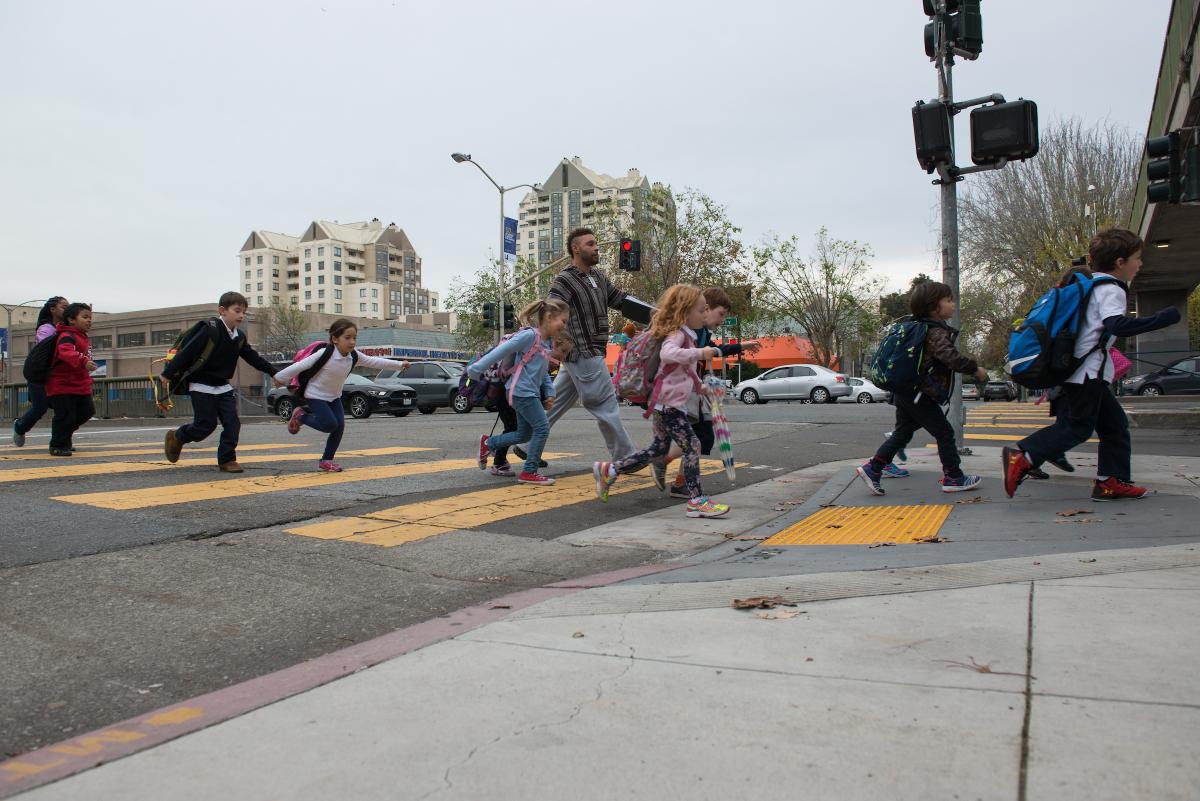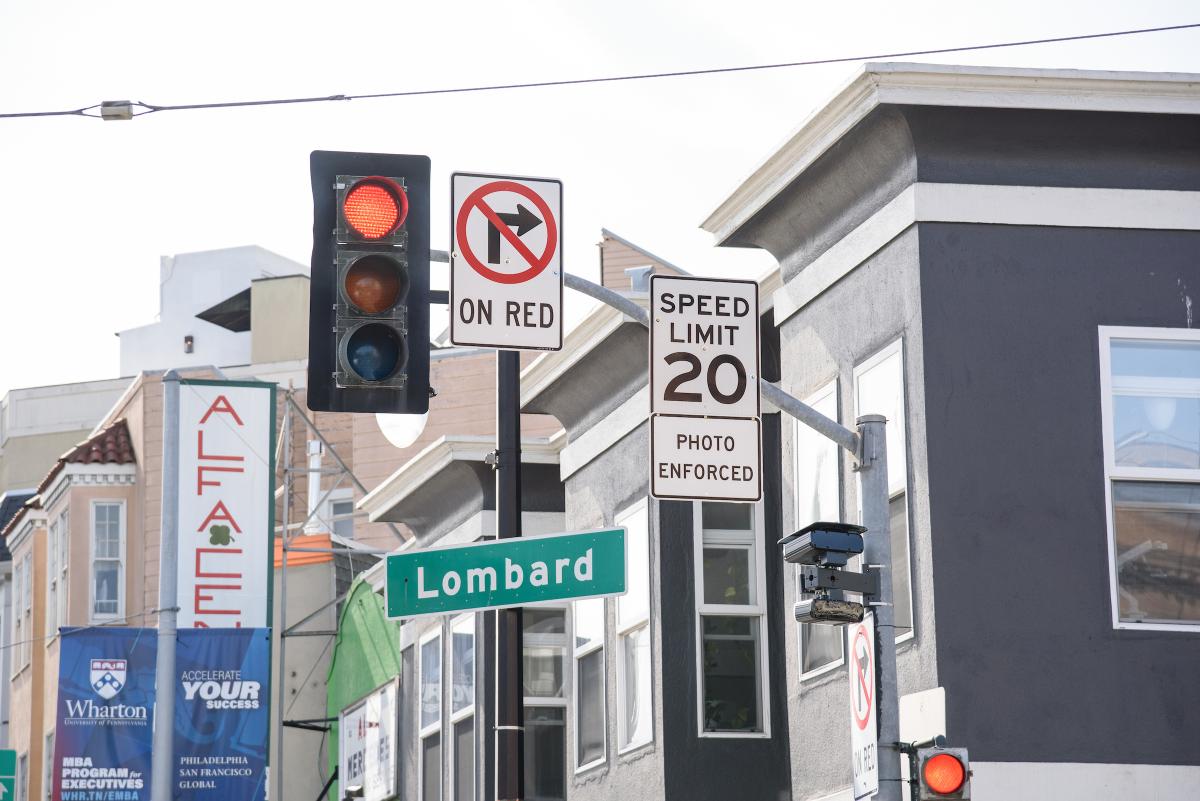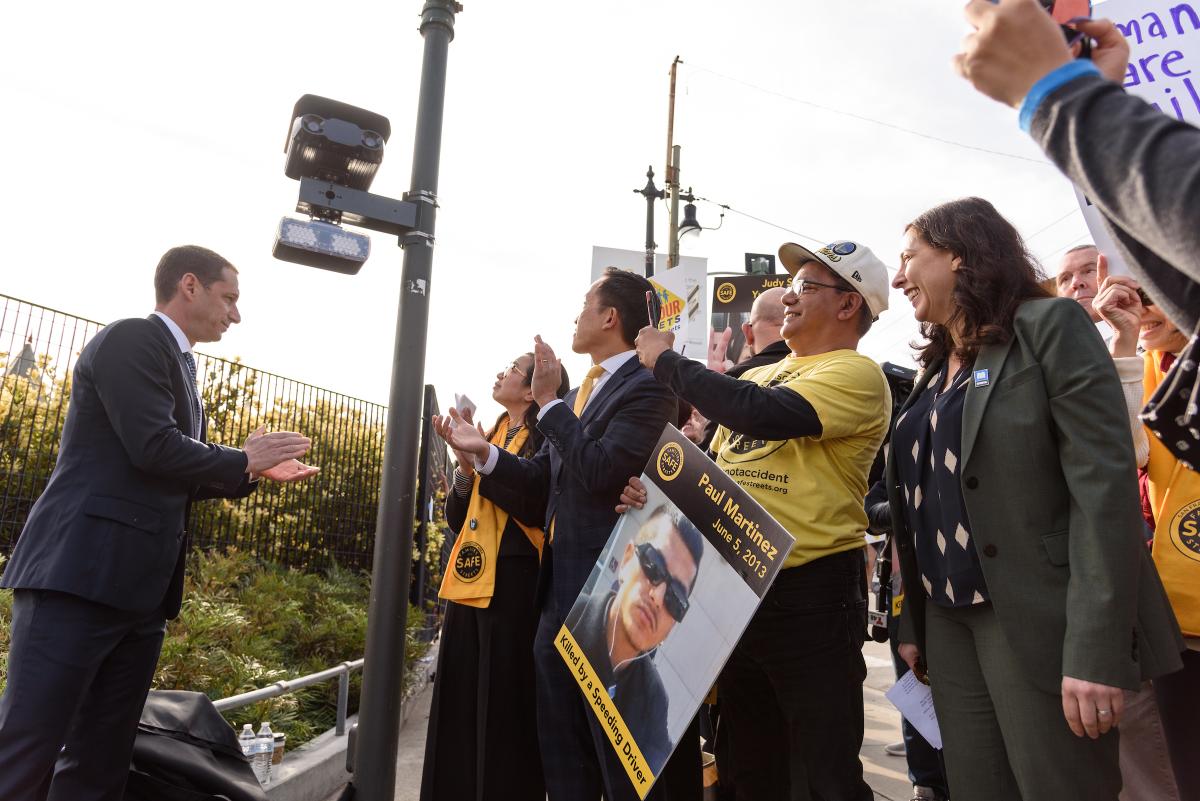
Speed cameras are helping us make streets safer across the city -- including near schools.
On Tuesday, August 5, our Speed Safety Camera Program will begin issuing tickets at 33 locations across the city.
The program aims to reduce speeding and make streets safer for everyone. We are proud to be the first city in California to implement this life-saving technology.
Right now, in San Francisco, speed cameras are helping to slow traffic near spaces where many people walk, bike and drive. These include:
- 8 schools
- 12 parks
- 11 senior and disability service sites
- 12 busy neighborhood and commercial corridors
We know these cameras are making an impact thanks to data we collected during the warning period. It suggests drivers are already adjusting their speed. And this is happening on a major scale, as more than 350,000 warnings have been issued since cameras were first activated in March 2025.
It is encouraging to see the program live up to its goal: educating drivers to shift to slower, safer speeds. Now, we’re here to help with more information.
Learn what to expect as speed cameras start issuing tickets – and the impact we have seen so far during the warning period.
What changes on August 5

This speed camera on Lombard Street is one of 33 sites across the city where we are using a proven tool to reduce speeding.
If you've received a warning in the mail over the past 60+ days, a speed camera detected that your vehicle was going 11 mph or more over the speed limit at one of the camera locations. Until now, those warnings carried no fines. Starting today, tickets begin.
How enforcement works:
- Violation fines range from $50 to $500, based on how fast the driver was going.
- Low-income drivers may qualify for reduced fines or payment alternatives.
- First-time violators in the 11–15 mph range will receive a forgiven citation — a final warning, not a fine.
- Drivers speeding 16 mph or more over the limit will receive fines immediately.
How to pay a fine:
- Online – you can visit the SFMTA Violation Info website.
- By phone – you can call 1-833-615-0388.
- By mail – you can send a check using the enclosed envelope with the speeding ticket.
For more information, you can visit our Speeding Ticket webpage (SFMTA.com/SpeedingTicket).
All revenue from tickets will be reinvested into street safety improvements — including traffic calming and roadway upgrades in neighborhoods across San Francisco. After covering the cost of operating the program, any remaining funds will go directly toward reducing speeding and preventing serious crashes.
Promising trends: Drivers are slowing down
The warning period was designed to educate drivers and help shift behavior. Data from the initial warning period shows promising signs that warnings encouraged people to slow down on city streets.
Here is what we have learned so far:
- Over 70% of vehicles issued a warning haven’t received another.
- Citywide, average daily speeding events dropped by over 30% between week 1 and week 7 of cameras being active.
- High-volume locations, where cameras have been online longer, saw even sharper declines — between 40% and 63%.
- 50% of all warnings went to San Francisco residents.
The program has been particularly effective in high-volume areas, where cameras have been issuing warnings for a longer period:
- Fulton Street saw a 63% decrease in speeding events over 13 weeks between Arguello Boulevard and 2nd Avenue.
- Geneva Avenue saw a 45% decrease over eight weeks between Prague Street and Brookdale Avenue.
- Bayshore Boulevard saw a 40% decrease over seven weeks between the U.S. 101 off-ramp and Tunnel Avenue.
How a state law helped us launch this tool:

Mayor Daniel Lurie announces the launch of our pilot program for speed safety cameras.
On March 20, 2025, Mayor Daniel Lurie officially launched San Francisco’s new Speed Safety Camera Pilot, made possible by the passage of AB 645. This landmark legislation authorizes the use of speed safety cameras in six California cities for the first time. These cameras are now operational in San Francisco, marking the first deployment of their kind in the state.
Speed is the leading cause of severe traffic injuries and deaths in San Francisco — and proven tools like speed safety cameras make a difference. In New York City, violations at camera locations dropped by 94% since the program began in 2014. At sites installed in 2022, serious injuries and fatalities fell by 14% within just one year.
Part of a bigger safety strategy
Speed safety cameras are just one piece of our broader effort to improve street safety citywide.
This year, we’ve continued to focus on safety upgrades — especially those that protect the most vulnerable people on our streets. That includes making it safer for children to walk or bike near schools, lowering speed limits and improving pedestrian safety along high-injury corridors. Here’s a snapshot:
- 14 miles of speed limit reductions on High Injury Network streets
- Daylighting completed at all schools citywide, now expanding to all intersections — boosting visibility and safety at all crosswalks.
- Final completion of 925 intersection safety upgrades through the Vision Zero Quick- Build tool kit across the High Injury Network.
- Flashing beacons installed at key crossings to protect people walking and biking.
These changes are part of a coordinated strategy to reduce crashes, lower speeds and create safer streets for everyone.
Find out more
To pay tickets or find out more about payment options, you can visit our Speeding Ticket webpage (SFMTA.com/SpeedingTicket).
To learn more about the speed camera program and for FAQs, visit our Speed Safety Cameras webpage (SFMTA.com/SpeedCameras).